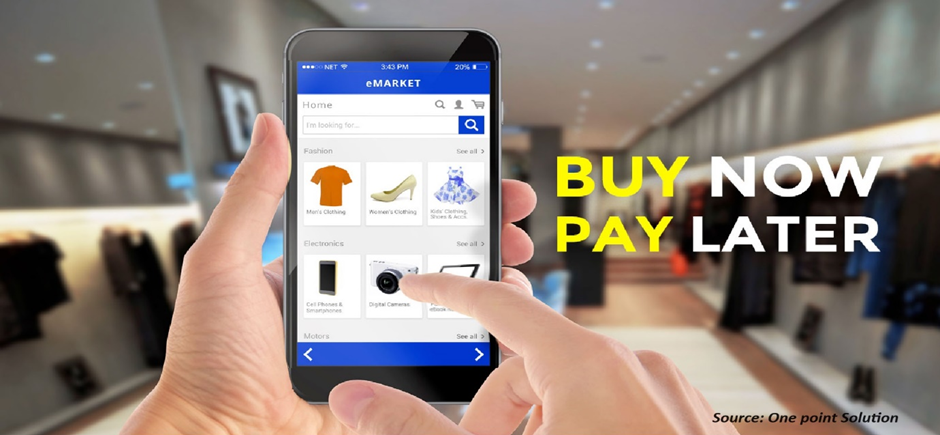
Indonesia Mobile Payment Market by Age (Generation Z, Millennials, Generation X, and Baby Boomers), by Payment Type (Proximity and Remote), and by Application (Money Transfers, Merchandise Purchases, Bill Payments, Airtime Top-ups, Ticketing, and Others) – Opportunity Analysis and Industry Forecast, 2024–2030
Industry: ICT & Media | Publish Date: 01-Sep-2024 | No of Pages: 111 | No. of Tables: 79 | No. of Figures: 44 | Format: PDF | Report Code : IC2482
Indonesia Mobile Payment Market Overview
The Indonesia Mobile Payment Market size was valued at USD 4.69 billion in 2023, and is predicted to reach USD 12.05 billion by 2030, with a CAGR of 13.4% from 2024 to 2030. The mobile payment system, also referred to as money transfer, mobile money, m-payments, electronic payments, and digital payments, facilitates financial transactions through mobile devices such as smartphones, tablets, and wearables. These transactions occur through mobile apps or various methods such as proximity and remote transactions. Mobile payment systems comprise diverse types such as mobile wallets, mobile banking apps, and online payment services such as PayPal, Venmo, and Google Pay.
Utilizing technologies such as SMS, near-field communication (NFC), quick response (QR) codes, and others, these systems ensure smooth transactions while employing robust security measures including encryption and biometric authentication to protect personal and financial data. Praised for their convenience, speed, security, and integration with other financial tools, mobile payment systems experience widespread adoption. Additionally, users can configure payment apps to automatically settle bills, such as utility or credit card bills, ensuring efficient financial management and preventing late payments.
Rising Fintech and Digital Banking Services Propels the Indonesia Mobile Payment Market
The rise of fintech and digital banking significantly boosts the mobile payment market in Indonesia. Fintech innovations and digital banking services offer user-friendly financial solutions accessible via mobile devices, democratizing financial services. Consumers can conveniently manage their finances, make payments, and conduct transactions from their smartphones.
Integration of mobile payment features within fintech apps and digital banking platforms enhance user experience by providing seamless access to payment options and account management. Fintech firms and digital banks often lead innovation in payment technologies such as peer-to-peer transfers and contactless payments, driving adoption and shaping industry standards. As consumers increasingly embrace fintech and digital banking, the mobile payment market expands, offering greater choice and accessibility in the digital economy.
Ease of Use in Mobile Payment Services Drives the Indonesia Mobile Payment Market Expansion
In the Indonesia mobile payment market, ease of use is a cornerstone that enhances platform accessibility and user-friendliness. Simplified interfaces, quick transactions, and robust security features foster trust and promote widespread adoption among consumers and merchants. Clear support and educational efforts further bolster user confidence, ensuring a positive experience and contributing to long-term market growth.
Resistance from Traditional Financial Institutions Restrains the Indonesia Mobile Payment Market Growth
The resistance from traditional financial institutions represents a significant obstacle to the Indonesia mobile payment market growth in the country. Established banks and financial entities may view mobile payment solutions as disruptive to their existing business models, leading to reluctance in supporting or promoting these innovative technologies. This resistance stems from concerns about potential revenue cannibalization, regulatory complexities, and the perceived threat of losing control over payment infrastructures.
Consequently, traditional financial institutions may hesitate to invest in mobile payment initiatives or collaborate with fintech startups and mobile payment providers, hindering the development and adoption of innovative payment solutions. Overcoming this resistance requires collaboration, regulatory alignment, and education to demonstrate the benefits of mobile payments for both financial institutions and consumers, thereby unlocking the full potential of the Indonesia mobile payment market.
The Emergence of Real-Time Payment Creates Opportunities in the Indonesia Mobile Payment Market
Real-time payments have emerged as a game-changer in the Indonesia mobile payment market, presenting significant opportunities for growth and innovation in the country. These systems enable instantaneous fund transfers between parties, offering unparalleled speed, convenience, and efficiency.
This breakthrough opens up a plethora of use cases for mobile payment providers, allowing them to deliver seamless and frictionless payment experiences to both consumers and businesses. With real-time payments, transactions can be settled instantly, whether it's splitting bills with friends, making retail purchases, or transferring funds between accounts.
Moreover, the integration of real-time payment capabilities into various industries, such as e-commerce, peer-to-peer lending, and on-demand services, fosters innovation and expands the mobile payment ecosystem. Overall, the emergence of real-time payments revolutionizes payment processing and creates fertile ground for growth and innovation in the Indonesia mobile payment market.
Competitive Landscape
Various market players operating in the Indonesia mobile payment industry include Alphabet, Inc. (Google), Alibaba Group Holdings Limited, Amazon.com, Inc., Apple, Inc., PayPal Holdings, Inc., Visa, Inc., Tencent Holdings Limited (WeChat), MasterCard International, Inc., Samsung Electronics Co. Ltd., Block, Inc., and others. These key players have adopted various strategies to strengthen their share in the Indonesia mobile payment sector.
Indonesia Mobile Payment Market Key Segments
By Age
-
Generation Z
-
Millennials
-
Generation X
-
Baby Boomers
By Payment Type
-
Proximity
-
Near-Field Communication (NFC)
-
Quick Response (QR) Code Payments
-
-
Remote
-
Internet Payments
-
SMS/Direct Carrier Billing
-
By Application
-
Money Transfers
-
Merchandise Purchases
-
Bill Payments
-
Airtime Top-ups
-
Ticketing
-
Others
REPORT SCOPE AND SEGMENTATION:
|
Parameters |
Details |
|
Market Size in 2023 |
USD 4.69 Billion |
|
Revenue Forecast in 2030 |
USD 12.05 Billion |
|
Growth Rate |
CAGR of 13.4% from 2024 to 2030 |
|
Analysis Period |
2023–2030 |
|
Base Year Considered |
2023 |
|
Forecast Period |
2024–2030 |
|
Market Size Estimation |
Billion (USD) |
|
Growth Factors |
|
|
Companies Profiled |
10 |
|
Market Share |
Available for 10 companies |
|
Customization Scope |
Free customization (equivalent up to 80 working hours of analysts) after purchase. Addition or alteration to country, regional, and segment scope. |
|
Pricing and Purchase Options |
Avail customized purchase options to meet your exact research needs. |
KEY PLAYERS
-
Alphabet, Inc. (Google)
-
Alibaba Group Holdings Limited
-
Amazon.com, Inc.
-
Apple, Inc.
-
PayPal Holdings, Inc.
-
Visa, Inc.
-
Tencent Holdings Limited (WeChat)
-
MasterCard International, Inc.
-
Samsung Electronics Co. Ltd.
-
Block, Inc.




 Speak to Our Analyst
Speak to Our Analyst

































